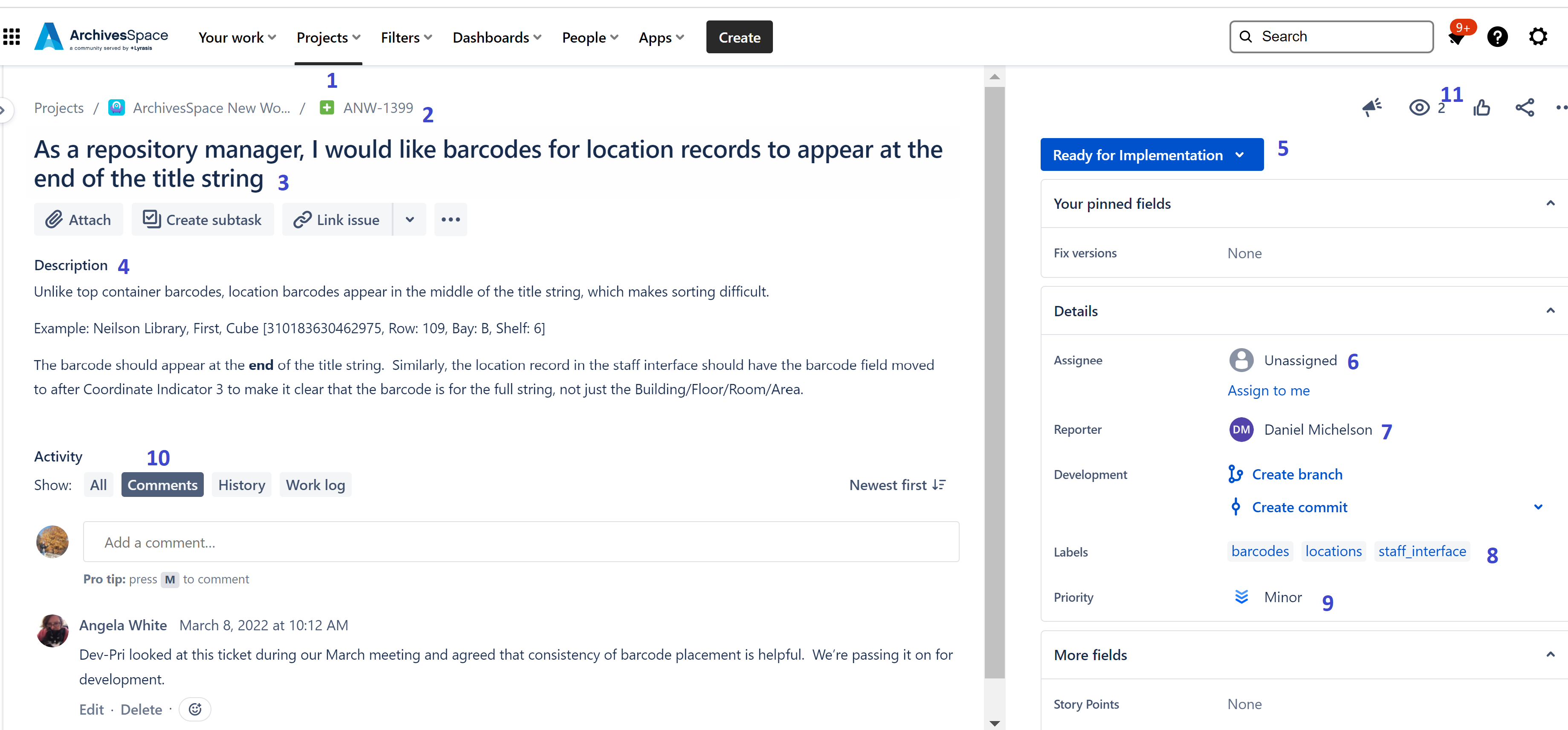/
How to read a JIRA issue record
How to read a JIRA issue record
Key to a JIRA issue record
- Type - See the Glossaries for descriptions of the types in use by ArchivesSpace.
- Issue Key - a unique identifier for the issue
- Summary - a short, usually one-sentence, description of the issue
- Description - a fuller description of the issue (not always used if the summary describes the issue in enough detail)
- Status - indicates where a story is in the development workflow. In the active ANW project, the major status options, in workflow order, are Newly Added > Awaiting More Information > Awaiting Prioritization > Ready for Implementation > Assigned to Developer > Development Started > Ready for Testing > Ready for Inclusion in Release Candidate > Closed - Complete, Closed - Will Not Do, or Closed - Duplicate (You can also view the full Workflow Diagram and Narrative, with all statuses.)
- Assignee - the developer tasked with working on the issue
- Reporter - the person who first logged the issue into JIRA
- Labels - keywords that relate to this issue; one or more labels may be applied. See the Glossaries for descriptions of many of the labels currently in use.
- Priority - a relative level of priority to the community or the health of the application. See the Glossaries for definitions.
- Comments - Additional information about the user story, such as adjustment to descriptions or specifications, references to related user stories or sources, or explanation of why a user story was not accepted.
- Notifications/Watch/+1 options - buttons to further interact with the issue, including the option of being notified when anything is updated on it.
Not pictured
Attachments - some issues have external documents such as specifications or screenshots that further describe the issue
Dates - indicates when the issue was created and last updated in JIRA.
Related content
Development Prioritization Sub-Team
Development Prioritization Sub-Team
Read with this
Workflow Diagram and Narrative
Workflow Diagram and Narrative
More like this
2024-2025 Dev Pri
2024-2025 Dev Pri
Read with this
Bugs_Issues
Bugs_Issues
More like this
Glossaries
Glossaries
Read with this
JIRA Resources
JIRA Resources
More like this
